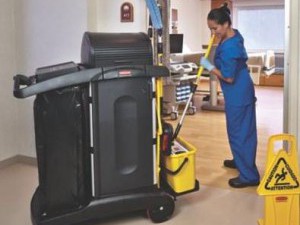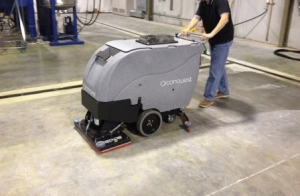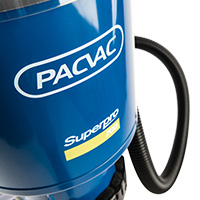
Escalating employee burnout among first responders and front-line workers is putting pressure on leaders within cleaning and restoration businesses to implement supportive workplace solutions.
The numbers are in – and, without question, burnout has become an issue for many industries, including the cleaning, hygiene and restoration sectors.
According to a global Future Forum Pulse survey of 10,243 respondents, burnout among employees is on the rise internationally, especially among women, younger workers and middle managers.
Although employees with work flexibility report higher scores for productivity, connection and company culture, 42 per cent of people overall say they are experiencing burnout.
Closer to home, Gartner’s Global Talent Monitor Survey, conducted between October and December 2022, indicates that many Australians are struggling.
In particular, employees report that their financial, physical and mental wellness have fallen to their lowest points in more than two years.
For companies, business leaders, and their employees, the question now is how to respond to an insidious burnout trend that can result in employees suffering from chronic stress that often causes physical and emotional exhaustion, low self-esteem, reduced productivity and detachment from their peers.
Kerrie Dale, general manager at Workplace Rehabilitation Management, is not surprised at the rise of burnout, noting that first responders and front-line workers in high-stress environments have experienced a string of confronting challenges in recent years.
“We have seen fires, multiple COVID lockdowns, and then floods,” she says.
“So, it has resulted in a situation where people such as first responders have simultaneously become service providers and victims. And no one has really had the chance to process any of that.”
In addition, Dale says many work-from-home employees have had to deal with added strains and anxiety related to changing family scenarios, the adoption of new technology platforms, and isolation from their colleagues.
“People have had to cope with a lot of change.”
Restorers in the hot seat
Restoration professionals are among the cohort of workers that has observed the most harrowing of scenes in recent years stemming from natural disasters. They have had to watch on and interact with people who have lost their loved ones, homes and businesses to fires and floods, in particular.
Lorraine Rogic, a cleaning industry expert and managing director of Logic Business Resources, says restorers and cleaners often experience distressing workplace circumstances.
“In the restoration business, it’s not just about floods – it could be cleaning up bodily fluids and things like that,” she says.
“It’s always been confronting and some people may just leave the industry as opposed to being given the support they need.”
Although the cleaning and restoration industries have evolved from times when workers were assessed as “either being built for the work, or not”, Rogic believes management can still do much more to aid workers.
As a starting point, leaders should acknowledge that technology has made workers “more available than ever” and insist on policies that give them genuine time away from the office.
They should also resist the temptation to load up high-performing workers with more tasks at a time when recruitment is tough.
“There’s no such thing as multi-tasking,” Rogic says.
“We really can achieve more when we do one thing at a time.”
Melissa Behrend, a director at HR on Call, says the merging of people’s lives between work and home as a result of the pandemic has added extra layers of duties, complexity and anxiety for many employees. For those onboarded during COVID-19, they were often given task-focused jobs.
Now, they may have to be recalibrated to work in a mainstream office when they would prefer to keep working from home.
“They’re trying to learn social niceties and norms in a vacuum,” Behrend says. “And then if you overlay issues such as floods and COVID, they’re suffering additional stress on top of that.”
The result is a group of workers who may be overwhelmed and mentally and physically spent.
Watch out for red flags
Dr Melissa Marot, an organisational psychologist and clinical neuropsychologist at The Mind Room, says leaders, managers and HR personnel should be on the alert for possible signs of employee burnout. This could include mental and physical exhaustion, lethargy, mood swings, social withdrawal and lower job satisfaction and productivity.
Formerly punctual employees may start turning up late for work or appear to be less motivated than in the past. They may seem disengaged from other team members and self-isolate at lunch or have standoffs with other workers with whom they previously got on well.
Likewise, Dr Marot says employees should be conscious of burnout risks. If they find that they are getting more irritable, or if they are exhausted and finding less joy at work, they should treat it as a wake-up call.
“And if your friends and family are saying, ‘Hey, you’re different than what you were six months ago,’ you need to be aware of that,” she says.
“It often happens bit by bit. That’s the issue with burnout – often it isn’t really noticeable at first. It does creep up on you.”
Dale also urges workers to take responsibility for some factors that can be controlled at an individual level – sleep more, drink less and eat better.
Crucially, she says employers should create a workplace environment in which staff feel supported and not “victim blamed”.
“Don’t make someone who is already in a vulnerable position feel bad that they haven’t done some of the things they were meant to do.”
Rogic has no doubt that employers can play a key role in preventing employee burnout and improving wellbeing. For example, providing employee assistance programs is a smart way to assist staff. This could include offering access to financial counselling services that could be a life-changer for staff.
Whatever they do, Rogic agrees it is essential for bosses to create a culture in which staff feel comfortable to bring up any burnout concerns with senior peers.
“Give them permission and encourage them to approach their manager and say, ‘Look, this is happening and that’s happening’ and then for the manager to be seen to be actually doing something about it. Culturally, things will shift if employees talk more to their managers about what’s going on.”
Staff need to know, adds Rogic, that they will not be reprimanded or branded as a lazy worker if they raise concerns about personal burnout.
Behrend agrees that employment assistance programs can be invaluable. She also suggests conducting an employee survey to identify any workplace pain points.
“In some cases, one employee may leave the business and another worker gets three jobs piled on to them. So, it’s about understanding those issues and knowing that people may have days where other factors are impacting their performance. It’s just so important for leaders and managers to recognise signs and symptoms of burnout. Even co-workers can check in to ask ‘are you okay?’ and to be aware of the wellbeing resources that you can point staff to. You don’t have to be an expert in it, you just have to be there and point them in the right direction and recognise that, maybe, someone’s not okay.”
Complacency comes at a cost
Burnout is an issue that will not just fade away. A new study of 1400 employed Australians from the University of Melbourne and YouGov reveals that, in the aftermath of the pandemic, Australian workers across all ages and stages are in poorer physical and mental health.
So-called prime-aged workers – those between 25 and 55 – are reporting the greatest burnout, while about 40 per cent of respondents feel less motivated about their work than before the pandemic. Worryingly, 33 per cent of this prime-aged workforce is thinking about quitting.
Such findings make it clear that leaders in the cleaning sector cannot afford to be complacent.
Behrend says Australia’s “she’ll be right” mentality can compound the problems of burnout. “I think in the past that attitude has been to our detriment. Bosses have got to be proactive if they see those signs of people struggling and not just let them push through those issues.”
Rather than ignoring signs of trouble, she urges leaders to embrace responses such as mental health first aid.
As all organisations grapple with their response to burnout, Dr Marot says leaders and managers should never ignore the importance of genuine, two-way communication with their staff.
“Communication needs to go both ways,” she says. “But it’s important that the employer encourages a culture where that communication is possible. “It’s really important that the leaders in the organisation, right down to line supervisors, not just encourage communication but really listen to their employees and take action.”
Rogic agrees that actions speak louder than words.
“If a manager stands there and says, ‘We want to support you, we want to help you’ and then doesn’t provide any support or any help, that speaks volumes, regardless of what you discuss in your team meetings.”
She says the truth is that there was not enough support for first responders, restorers and other workers in high-stress roles before COVID-19. The pandemic provides pause for thought and a chance to rectify that situation.
“I hope that one of the positives out of COVID is that there’s more leadership around burnout and there is more assistance and support for those who are most vulnerable.”
This article first appeared in the July/August issue of INCLEAN magazine
Comment below to have your say on this story.
If you have a news story or tip-off, get in touch at info@incleanmag.com.au
Sign up to INCLEAN’s newsletter.




